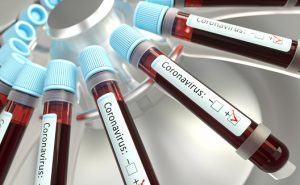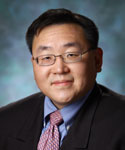On Dec. 30, 2019, an ophthalmologist named Li Wenliang notified his colleagues about an illness that was reminiscent of severe acute respiratory syndrome (SARS) in a city in the Hubei province of China called Wuhan. As an ophthalmologist, this was not directly relevant to his practice; he merely wanted to warn colleagues that they might want to be more careful about contact precautions. Soon afterward, the Wuhan Public Security Bureau forced him to sign a statement recanting the warning and admitting he had made a false statement to disturb public order.
By that time, however, it was too late. You have, by now, heard the oft-repeated phrase that COVID-19 is apolitical. Despite multiple press releases insisting that COVID-19 would die out, the virus has spread like the wildfires that affected California and Australia in 2019.
By March 11, 2020, the World Health Organization (WHO) announced that it was classifying COVID-19 as a pandemic. This is the first time the WHO has declared a pandemic since the H1N1 swine flu in 2009. This extraordinary action reflects the extraordinary speed with which COVID-19 has spread worldwide. At the time of this writing, COVID-19 has been reported in 114 countries and killed more than 4,000 people; by the time you read this, these numbers will have increased.
On March 13, President Trump declared the pandemic a national emergency.
The Johns Hopkins Center for Systems Science and Engineering is tracking cases of COVID-19 in real time. These data are being shared in an interactive, web-based dashboard that is updated every 15 minutes, using data from the China CDC (CDCC), Hong Kong Department of Health, Macau Government, Taiwan CDC, European CDC (ECDC), the World Health Organization (WHO), the U.S. Centers for Disease Control & Prevention (CDC), the Government of Canada, and the Australian Government Department of Health. The dashboard also incorporates reports from local municipalities and organizations, most prominently, DXY, a crowdsourced platform run by the Chinese medical community.
According to the Johns Hopkins Coronavirus Resource Center, more than 322,000 cases of COVID-19 have been confirmed worldwide (as of 3/22/2020). The highest number of cases have been reported in China (81,397), Italy (53,578), the U.S.(30,285), Spain (28,603) and Germany (23,974). All 50 states have reported at least one case of COVID-19; West Virginia was the last to fall, on March 17.
All of these numbers, of course, are wrong; they reflect the number of identified cases and do not take into account the large number of patients who will never be identified, either because they were minimally symptomatic or they were never tested.
To address this shortcoming, the CDC is planning on using public health labs in five cities across the U.S. to perform surveillance of COVID-19, using the infrastructure already developed for surveillance of influenza.

Getty images/Wiley Image Library: Vials of blood in a centrifuge being tested for coronavirus infection.
COVID-19 Testing
On Feb. 6, the CDC announced that it had shipped 200 kits to laboratories across the U.S. Each kit could be used to test over 700 samples; these kits were designed to allow states to conduct their own tests for COVID-19 locally. One week later, however, the CDC announced these kits were flawed; many of them yielded inconclusive results, further hampering our attempts to define the prevalence of COVID-19 in the U.S.
In light of this, on Feb. 29, 2020, the U.S. Food & Drug Administration (FDA) issued emergency authorization for other diagnostic labs to develop their own tests for COVID-19. Stanford and the Cleveland Clinic have both developed in-house assays, as have Quest and LabCorp. The problem with the commercially available tests is that neither Quest nor LabCorp has the facilities to collect the relevant samples, which require protective gear and a dedicated room.
The latest bottleneck in testing is caused by problems obtaining the specialized swabs needed to collect samples. Ironically, one of the major suppliers of these swabs is in Northern Italy, which has been engulfed by the pandemic.
In the U.S., the University of Washington is leading the way when it comes to COVID testing. Following the model developed by a drive-through coronavirus clinic in South Korea, the University of Washington has turned the hospital parking lot into a drive-through COVID-19 testing facility for its employees. Patients are greeted by a nurse in protective gear, who swabs each nostril and tests for both influenza and COVID-19, without the patient getting out of the car. Because this is occurring in a parking lot, the university has achieved a simple solution to an important problem: having appropriate ventilation. Using this system, it can test one person every five minutes; results are typically available in one day.
The 65 hospitals of the Tenet Healthcare Corp., M Health Fairview of the University of Minnesota in Minneapolis, the Mayo Clinic in Rochester and Colorado’s Department of Public Health and Environment were among the first to set up similar systems. Presumably, this system could be replicated in hospital parking lots across the U.S., especially since patients with commercial insurance may be tested for free.
Mechanism & Mortality
Patients infected with COVID-19 appear to experience two stages of illness:
- Replicative stage: During the first several days of infection, viral replication triggers an innate immune response. For most patients, this phase is associated with mild respiratory symptoms; in some patients, there is a direct cytopathic effect to the pneumocytes or cardiac muscle, which leads to acute respiratory distress syndrome (ARDS) or myocarditis, respectively (http://doi.org/10.1038/s41569-020-0360-5).
- Adaptive immunity stage: During this stage, viral titers are suppressed by an adaptive immune response. This stage may be associated with cytokine storm, leading to features of sepsis or hematophagocytic lymphohistiocytosis.
The initial report from Wuhan, China, may give us an idea of what to expect as COVID-19 increases in prevalence. Patients with co-morbid conditions, such as hypertension, diabetes and coronary artery disease, were most likely to require admission. Of the 191 patients admitted to Jinyintan Hospital and Wuhan Hospital, 28% died; risk factors for death included older age, evidence of sepsis and a D-dimer greater than 1 μg/mL.
As the country with the highest number of identified cases in Europe, Italy’s experience with COVID-19 may provide us with some insight into how this virus may eventually affect the U.S. The Italian experience with COVID-19 is more than sobering. Yascha Mounk, PhD, an associate professor of practice at Johns Hopkins University’s School of Advanced International Studies, describes the recommendations of the Italian College of Anesthesia, Analgesia, Resuscitation, and Intensive Care (SIAARTI) as follows:
“There are now simply too many patients for each one of them to receive adequate care. … [The guidelines] begin by likening the moral choices facing Italian doctors to the forms of wartime triage that are required in the field of “catastrophe medicine.” Instead of providing intensive care to all patients who need it, its authors suggest, it may become necessary to follow ‘the most widely shared criteria regarding distributive justice and the appropriate allocation of limited health resources.’ The principle they settle upon is utilitarian. ‘Informed by the principle of maximizing benefits for the largest number,’ they suggest that ‘the allocation criteria need to guarantee that those patients with the highest chance of therapeutic success will retain access to intensive care.’”
The SIAARTI guidelines, which were written by Italian clinicians who are actively dealing with the COVID-19-infected patients, specifically recommend we take into account the limitations of local resources when deciding how to allocate healthcare resources. They note that clinicians may need to allocate intensive care unit beds to younger, healthier patients. This is very different from the first come, first served system of allocation that most of our hospitals use. To be blunt, the guidelines imply that instead of focusing our resources on the sickest patients, we may need to focus on the patients who are most likely to survive.
These guidelines acknowledge an important limitation of the healthcare system that is difficult to understand if you have never worked in a hospital: ICU beds. If you have never worked in a hospital, you may imagine a hospital works like a movie theater, waiting for patrons to fill its seats. If you have worked in a hospital, you know that healthcare economics have pushed our hospitals to capacity. Our ICUs, in particular, are already filled with critically ill patients; if those numbers double in the next several months, we may have nowhere to put those patients. In the past month, we have heard much about the challenges associated with ramping up the production of N95 masks and other critical supplies. Those challenges are dwarfed by the complexities associated with creating new ICU beds, and training the staff needed to attend to those beds.
How, precisely, patients who require immunosuppression may be affected by COVID-19 is hard to say. Investigators at the University of North Carolina at Chapel Hill and the Icahn School of Medicine at Mt. Sinai, New York, have taken the first stab at trying to define the risk among immunosuppressed patients by creating a registry for patients with inflammatory bowel disease who have been infected with COVID-19.
The Secure-IBD Registry collects basic information on patient epidemiology, co-morbid conditions and immunosuppression; because it has a head start, this group may provide us with the first glimpse into how our immunosuppressed patients may fare. But we rheumatologists are hard on their heels. An effort to create a similar registry for patients with rheumatic disease is being spearheaded by Philip Robinson, a rheumatologist and associate professor at the University of Queensland, Australia, and Jinoos Yazdany, chief of the Division of Rheumatology at Zuckerberg San Francisco General Hospital and the Alice Betts Endowed Professor of Medicine at the University of California, San Francisco, with the support of the ACR.
Social Distancing
Basketball, in the U.S., is like a form of religion; you know things are getting serious when it affects March Madness. The National Collegiate Athletic Association’s (NCAA) Division I Basketball Tournament has been canceled. That’s as unthinkable as canceling Christmas. Major American music festivals, including South by Southwest (SXSW) and Coachella, have been cancelled or postponed. Altogether, over 25% of all Americans have been ordered to stay at home as much as possible to stem the spread of this disease.
This seems dramatic until you compare these actions to what is taking place in other countries. In Europe, Italy, Greece, France and Spain have essentially shut down their entire nations until further notice. Germany may rapidly follow suit.
All of this is to enforce social distancing. In the absence of a vaccine or effective therapies, both of which won’t be in hand for years, prevention is the only cure. Social distancing is based on the concept that community spread can’t occur in the absence of a community.
The CDC recommends, whenever possible, maintaining a distance of six feet between you and other people; it also recommends avoiding congregate settings, which are defined as crowded areas where close contact with other people may occur, such as movie theaters, shopping centers, and stadiums. Working remotely, when possible, may also be helpful.
Many institutions are enforcing social distancing. At the undergraduate level, many schools are extending spring break, asking students not to return to their dorms for the time being; other institutions are moving to Zoom and other platforms created to allow for video conferencing. Because it is important to find humor in our darkest moments, it’s amusing to think that medical students, who already don’t show up for lectures, were simply ahead of their time.
Medical institutions are largely instituting similar changes; at Johns Hopkins, these include the following:
- Meetings are limited to 25 people or less;
- Work-related travel is prohibited;
- All conferences will be attended remotely;
- Bedside evaluation of patients suspected of having COVID-19 are limited to essential personnel; and
- Housestaff teams are assigned patients suspected of having COVID-19 only after non-housestaff teams are at capacity.
One more thing: The housestaff have moved to boxed lunches, rather than the big trays of food that used to be brought in at lunchtime.
This just makes the point that even simple interventions may have a dramatic impact. On March 12, Emmanuel Macron, the president of France, tweeted, “Wash your hands, greet people without kissing. … These acts may appear anodyne. They will save lives.” Simple acts, like routine hand-washing, are common-sense ways to limit the spread of a communicable disease among healthcare workers who are likely at higher risk of exposure.
In the absence of official guidelines, national and international organizations have taken it upon themselves to make some tough decisions. The ACR, the American College of Cardiology and the American Academy of Dermatology have already canceled major conferences. For other large organizations that are contemplating their options, I pass along the helpful advice given by Yascha Mounk, PhD: “Cancel everything. Now.”
Epilogue
The search for treatments is well underway. More than 80 clinical trials are being conducted in China alone, in collaboration with the WHO. Clinical trials for COVID-19 are focused on repurposing extant drugs and largely fall into four groups:
- Nucleoside analogs, which you predominantly know as antiviral drugs (e.g., favipiravir, ribavirin, remdesivir, galidesivir);
- Protease inhibitors, which form the cornerstone of the treatment for human immunodeficiency virus (e.g., disulfiram, lopinavir, ritonavir);
- Drugs that stimulate host immunity, such as pegylated interferon α-2a and -2b, chloroquine, hydroxychloroquine and nitazoxanide; and
- Immunosuppressive drugs, given the association between COVID-19 and cytokine storm (e.g., intravenous immunoglobulin, tocilizumab, baricitinib and glucocorticoids).
In China, tocilizumab has been approved for the treatment of severe complications of COVID-19. The Italian Society of Infectious and Tropical Diseases, on the other hand, recommends the use of either a protease inhibitor (i.e., lopinavir/ritonavir) or a nucleoside analog (specifically, remdesivir), in combination with an antimalarial (i.e., chloroquine or hydroxychloroquine). That said, a recent clinical trial demonstrated that lopinavir/ritonavir, when used to treat hospitalized patients with severe COVID-19 infection, did not impact either time to clinical improvement or viral load. Similarly, the tremendous enthusiasm for the use of hydroxychloroquine belies the scant clinical data supporting its use for COVID-19.
Remdesivir failed as a treatment for Ebola virus, but may turn out to be the most promising therapy we have for COVID-19. Two clinical trials of remdesivir for COVID-19 have already started; results are expected to be available as early as April.
None of this will be soon enough.
On Jan. 12, Li Wenliang was hospitalized at Wuhan Central Hospital. On Feb. 1, he was confirmed to have been infected by COVID-19. By Feb. 7, Wuhan Central Hospital announced that he had died, less than two months after he first sounded the alarm about the emerging epidemic. He was 33 years old.
In my French literature class, he would have been referred to as un héro malgré soi-même—a hero despite himself. He could have never suspected that anyone outside a small group of colleagues would have seen the missive that made him famous. He likely dashed off the message as casually as I might warn a friend about inclement weather.
Tragically, he is just the first of many such ordinary heroes, who sprout like weeds among healthcare providers. Many of these ordinary heroes will never be recognized; some of them are likely reading these words right now. We are in need of all of those heroes, because the enemy is at the gates, and our patients are relying on all of us to see them through.
Philip Seo, MD, MHS, is an associate professor of medicine at the Johns Hopkins University School of Medicine, Baltimore. He is director of both the Johns Hopkins Vasculitis Center and the Johns Hopkins Rheumatology Fellowship Program.
Author’s Note
I would like to thank Andrea Fava, MD, and Max König, MD, for their helpful comments on this manuscript.
ACR Resource Page: COVID-19
The ACR has created a page with regularly updated resources and brief answers to some frequently asked questions about COVID-19 and SARS-CoV-2, the coronavirus that causes this disease: https://www.rheumatology.org/announcements
Updated 3/23/20



